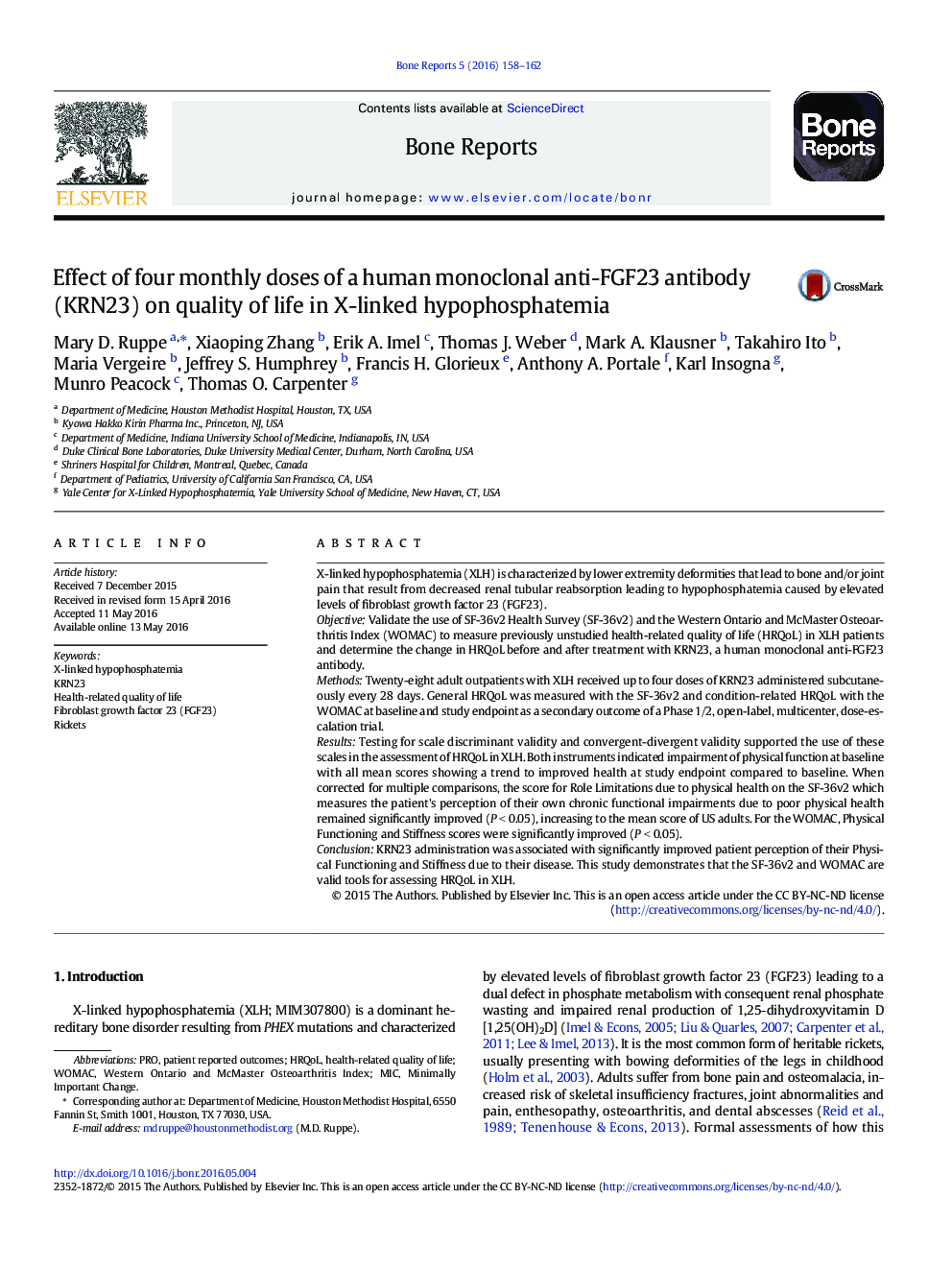| کد مقاله | کد نشریه | سال انتشار | مقاله انگلیسی | نسخه تمام متن |
|---|---|---|---|---|
| 2792315 | 1568667 | 2016 | 5 صفحه PDF | دانلود رایگان |
• Quality of life was assessed in 26 XLH patients before and after 4 months of treatment with KRN23.
• All mean scores showed a trend of improved health after 4 doses of KRN23 treatment.
• Role limitations due to physical health was significantly improved after multiplicity correction.
• Patient reported outcomes can provide valuable information in evaluating new treatments for XLH.
X-linked hypophosphatemia (XLH) is characterized by lower extremity deformities that lead to bone and/or joint pain that result from decreased renal tubular reabsorption leading to hypophosphatemia caused by elevated levels of fibroblast growth factor 23 (FGF23).ObjectiveValidate the use of SF-36v2 Health Survey (SF-36v2) and the Western Ontario and McMaster Osteoarthritis Index (WOMAC) to measure previously unstudied health-related quality of life (HRQoL) in XLH patients and determine the change in HRQoL before and after treatment with KRN23, a human monoclonal anti-FGF23 antibody.MethodsTwenty-eight adult outpatients with XLH received up to four doses of KRN23 administered subcutaneously every 28 days. General HRQoL was measured with the SF-36v2 and condition-related HRQoL with the WOMAC at baseline and study endpoint as a secondary outcome of a Phase 1/2, open-label, multicenter, dose-escalation trial.ResultsTesting for scale discriminant validity and convergent-divergent validity supported the use of these scales in the assessment of HRQoL in XLH. Both instruments indicated impairment of physical function at baseline with all mean scores showing a trend to improved health at study endpoint compared to baseline. When corrected for multiple comparisons, the score for Role Limitations due to physical health on the SF-36v2 which measures the patient's perception of their own chronic functional impairments due to poor physical health remained significantly improved (P < 0.05), increasing to the mean score of US adults. For the WOMAC, Physical Functioning and Stiffness scores were significantly improved (P < 0.05).ConclusionKRN23 administration was associated with significantly improved patient perception of their Physical Functioning and Stiffness due to their disease. This study demonstrates that the SF-36v2 and WOMAC are valid tools for assessing HRQoL in XLH.
Journal: Bone Reports - Volume 5, December 2016, Pages 158–162
